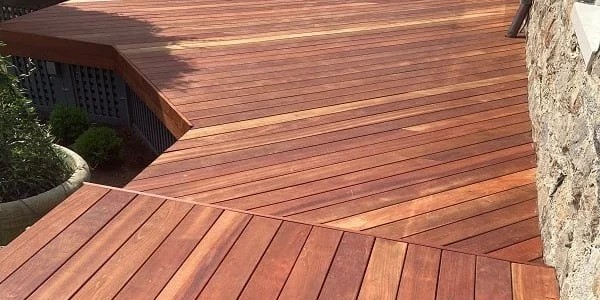WHAT IS JATOBA WOOD?
Beautiful, high performance, long-lasting, and competitively priced, Mataverde Premium Jatoba decking is also available FSC® certified.
WHAT MAKES MATAVERDE PREMIUM JATOBA DECKING STAND OUT?
Mataverde Jatoba wood deck boards provides long lasting beauty, high strength and exceptional durability, affordably. Similar to Ipe hardwood, Mataverde Premium Jatoba is remarkably, tough, strong and hard. Jatoba is an excellent option for backyard decks, commercial boardwalks, walkways, benches, seating, docks, and outdoor furniture. Mataverde Jatoba is sustainably harvested from approved forest projects in Brazil.
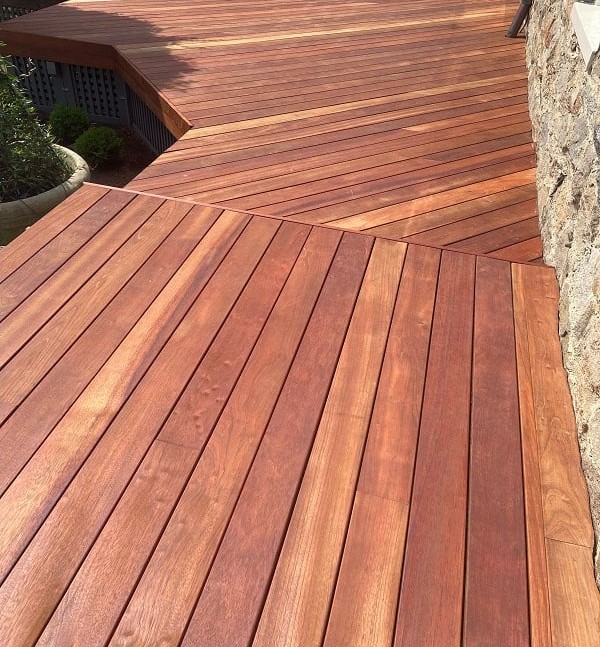
Mataverde Jatoba hardwood is an exceptional exterior decking material. This wood species is naturally resistant to fungal decay, rot, and termites. Jatoba wood is very durable and incredibly strong. When designed and built into exterior projects, the beauty and strength of this high-density hardwood species shines through. It may be used for decking, cladding, rainscreen siding, trim, benches, boardwalks, docks and more.
Mataverde® Jatoba Warranty: Mataverde Jatoba Decking is so reliable, it is backed by a 25 year limited warranty against decay and insects.
DOWNLOAD THE MATAVERDE JATOBA DECKING FACT SHEET
Ready to price Jatoba decking material for your deck project?
The Beauty of Jatoba: Color and Graining
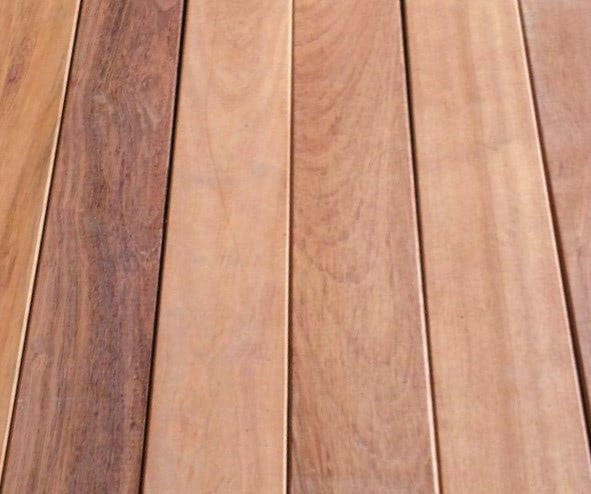
Mataverde® Premium Jatoba Hardwood Decking is all heartwood and can range in color from pale pink tones to reddish browns. Don't worry if you have a varied color appearance when you first receive your deck boards, it will darken up to cherry red tones amazingly fast. Sometimes as quickly as one hour! That's why it is has earned the nickname Brazilian Cherry. Jatoba decking is medium to coarse grained and the tropical color variations are breathtaking.
Like most Brazilian hardwoods, you will see lots of tropical graining and color variations that add to the beauty of Jatoba wood. It also has some darker streaks in some pieces to add more exotic variety. When installing Brazilian Cherry decking, think of it in the same way you would install a hardwood floor, use various darker and lighter pieces randomly to create a beautiful decking layout.
See Jatoba wood for yourself:
CHECK OUT JATOBA DECK PROJECT PHOTO GALLERIES
Would you like to see an actual piece of Jatoba? Order a sample today.
JATOBA HARDWOOD APPEARANCE OPTIONS
You can maintain the 'like new' wood look for your Jatoba deck boards by using Penofin Hardwood Formula or a similar penetrating oil finish. Or you can let your boards weather out naturally. Would you like a glimpse of what Jatoba decking will look like as it seasons and ages? Here's a photo of Jatoba decking after nearly 10 years of weathering in place. For a low maintenance decking option, you can allow your Mataverde Jatoba to weather to a silvery gray patina.
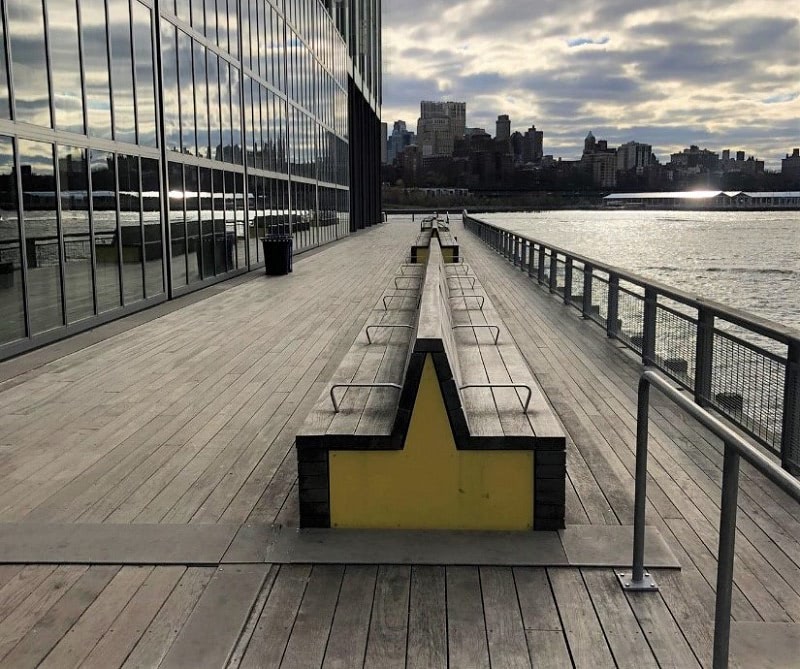
Would you like to learn more about how exterior hardwoods age gracefully?
Download the comprehensive FREE GUIDE, "How Exterior Hardwoods Weather".
Characteristics and Properties of Jatoba Lumber
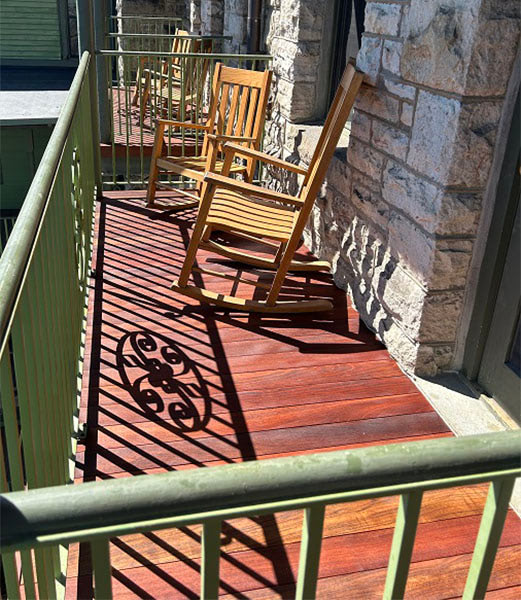
Mataverde® Premium Jatoba Hardwood Decking is a very dense, hard and tough wood decking option.
Durability
Jatoba hardwood is classified as a very durable wood species. Jatoba hardwood decking can withstand lots of punishment and extreme weather conditions. Mataverde Brazilian Cherry Decking has a very high performance rating. Because of its high density, it is naturally resistant to decay throughout the board. Jatoba is also highly resistant to termites and insects and is covered by the Mataverde 25-year Limited warranty.
Hardness
Brazilian Cherry has a Janka hardness range of 2,350 to 3,290 lbs. By comparison, Red Oak has a Janka hardness of 1,290 pounds. That makes Jatoba about 2 to 3 times harder than oak.
Fiber bending strength
Fiber bending strength testing measures the ability of a board to maintain its strength, without bending. Kiln dried Jatoba lumber has a fiber bending strength of more than 25,100 psi for both 1" and 2" thick boards. To put this in perspective, It would take over 25,000 lbs of weight, per square inch, to rupture Jatoba hardwood decking boards. That's why Jatoba decks have such a solid, "no bounce", feel when you walk on them.
That's also why engineers, building code officials, architects, and other design and construction professionals have such a high comfort level about the strength of this hardwood species on commercial boardwalks. Can you imagine how it will perform on a backyard deck?
Wood Density
Jatoba hardwood has a density of .94 g/cm3. It is so dense, 94% of it will sink in water. The high density of Jatoba hardwood is one reason why it is so remarkably hard. It is able to withstand so much foot traffic, without scratching, making it very resistant to wear and tear.
Mataverde Jatoba Fire resistance
Mataverde Jatoba has been tested and earned a Class A fire rating. The ASTM E-84 smoke density and flame spread testing conducted on Mataverde Jatoba hardwood meets the same requirements as the IBC (International Building Code) and the ANSI/NFPA (American National Standards Institute/National Fire Protection Association) to meet a Class A fire rating.
The natural fire resistant qualities of Jatoba hardwood, makes it an excellent choice for residential, commercial and public decks.
Trying to decide what is the best decking material for your project?
DOWNLOAD "The Ultimate Guide to Selecting the Right Decking" today.
Decking Installation Tips for Jatoba Wood
Jatoba Decking Installation Tips and Techniques
Because this wood decking is so dense, special fasteners and installation techniques are needed to make it easier to install. There are several 'tried and true' decking installation methods to choose from for hardwood decking. We have learned that face-screwing hardwood decking boards is without question the strongest and most secure method of installing any hardwood deck boards.
DOWNLOAD HARDWOOD DECKING INSTALLATION GUIDELINES HERE

Pre-Drill the hardwood decking and face fasten with screws.
Like other powerful Brazilian hardwoods, the first method for installing hardwood deck boards is to pre-drill them. Then fasten your deck boards with stainless steel screws directly to the wooden deck joists.
Ejector Screw Method
For larger projects, the Ejector Screw is a huge labor saving option. This method requires no pre-drilling of the deck boards and will securely fasten your hardwood decking to proper substrates like wood deck joists or sleepers. The labor cost savings on large scale projects can be huge, and easily outweigh the additional cost for the tool and screws.
Hidden Deck Fastener Method
If you don't want to see the exposed heads of deck screws, a hidden fastener like the Mataverde Concealed Deck Fastener works great for hardwood decking species like Brazilian Cherry. Bear in mind that you need adequate ground clearance and proper ventilation, wherever a hidden deck fastener is used. The Mataverde hidden fastener makes for a much faster decking installation. If you want to use a hidden deck fastener with your decking, it works best on narrower and thicker deck boards, like 5/4 x 4 or 21mm x 4 nominal sized deck boards.
Care and Maintenance for Jatoba Wood
As with any decking material, Jatoba hardwood decking should be cleaned regularly to remove dirt and debris. Regular cleaning will actually extend the life of wood decking materials, including hardwood decking species like Jatoba wood. For an extremely low maintenance option, Jatoba lumber can be allowed to weather naturally to a graceful silvery patina.
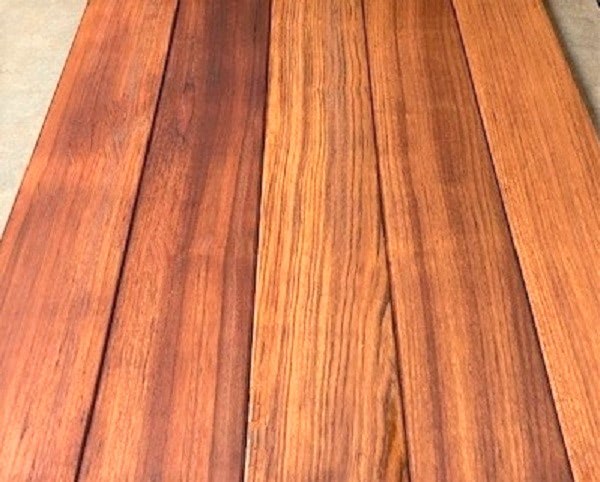
Jatoba decking with a coat of Penofin Hardwood Formula sealer. Jatoba will darken richly with exposure to UV rays.
If you prefer the rich natural colors of Jatoba wood, you can put a coat on a coat of a UV inhibiting oil based sealer, such as of Penofin Hardwood Formula, or other appropriate product, on your Jatoba hardwood. This natural oil finish produce will help blend, darken and enrich the tones and color of your Jatoba wood.
RELATED: HARDWOOD DECKING CARE AND MAINTENANCE
Mataverde® Jatoba Featured Project:
PIER 17 SOUTH STREET SEAPORT NEW YORK CITY
Mataverde FSC Certified Jatoba hardwood decking, benches, siding, trim and heavy timbers installed on Pier 17 in New York.
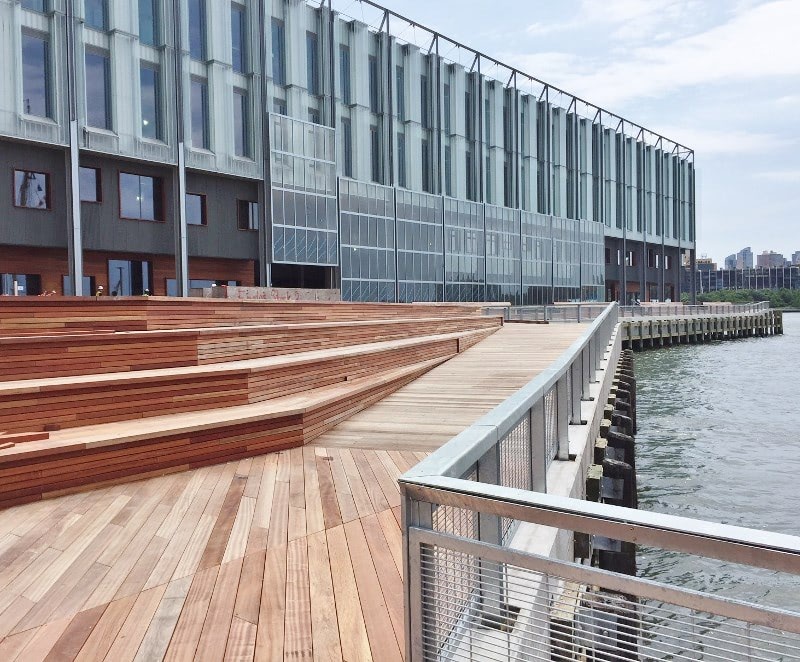
This South Street Seaport project on New York's historic waterfront, was rebuilt using FSC Certified Mataverde Jatoba decking, siding, benches, ramps, trim, lumber, heavy timbers and more.
Extremely long lasting, tough and resistant to decay, insects and fire, Mataverde Jatoba makes a beautiful and long lasting decking material on this historic landmark.
How Does Jatoba hardwood decking compare to other decking options?
Because it is a high density hardwood decking material, Jatoba wood will last, and last beautifully. Jatoba decking is an all natural sustainable decking material. Jatoba wood outperforms softwood decking materials and other decking material options such as composite decking, plastic decking, and others in nearly every measurable performance rating.
Looking for some deck design inspiration? Need deck ideas?
DOWNLOAD the "Deck Design Ideas Book"
61 pages featuring over 150 exciting deck design ideas!
Attention Deck Contractors! Don't miss out on our complimentary "Contractor's Ultimate Guide to Decking." This comprehensive resource provides invaluable insights and tips to help you excel in your deck-building projects. Get your hands on this must-have guide today!
RELATED:
| Jatoba Decking Photo Gallery | Request Decking Samples |
| Marine Decking Projects | Request Decking Quote |
| Hardwood Decking Installation | Hidden Deck Fasteners |


